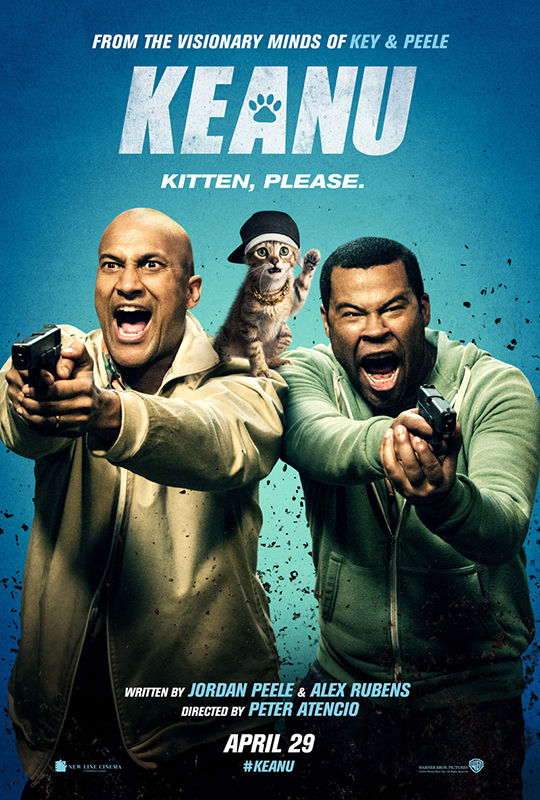Keegan-Michael Key and Jordan Peele of the acclaimed Comedy Central television series “Key & Peele” star in the satirical action-comedy “Keanu” (Warner Bros.).
The duo’s brand of socially aware humor, which frequently considers the influence of pop culture on racial identity, translates well to the big screen. The catch is that they’re bound to mimic what they spoof. And so, in crucial areas, their movie traffics in precisely the material they’re sending up.
Thus, despite a plot that hinges on an adorable kitten, an abundance of foul language renders the effort unavoidably distasteful. That’s too bad, because the cursing mars an amusing and insightful commentary on how mass media creates and enforces race-related stereotypes.
Key and Peele are engaging performers whose combination of shrewdness and goofiness allows them to deal with such sensitive topics in a way that reliably triggers laughter as well as reflection. It helps that their cinematic and musical references are mainstream and difficult to miss.
They portray two nerdy African American Los Angeles residents who find themselves in a precarious situation. After a drug dealer and his crew are ambushed while packaging their wares inside an abandoned church, the only survivor is a cute kitten. The cat escapes and ends up on the doorstep of graphic artist Rell (played by Peele, who co-wrote the script with Alex Rubens).
Rell is depressed because his girlfriend just dumped him. But the kitty, which he dubs Keanu — a nod both to the movie star and his Hawaiian name’s meaning, “cool breeze” — lifts his spirits. When Keanu is abducted weeks later, Rell’s cousin, Clarence (Key) vows to help find him.
Their search takes them to the strip-club headquarters of an inner-city gang. Far out of their comfort zones, they pose as murderous street thugs, anointing themselves Tectonic and Shark Tank. For their gambit to succeed, they’ll have to prove themselves during a drug sale at the Hollywood Hills home of a movie actress.
Director Peter Atencio, who helmed numerous episodes of “Key & Peele,” keeps the focus on his two stars. Their approach is generally lighthearted and good-natured.
Yet the disrespectful tone suggested by having a place of worship serve as a narcotics den is carried over in subsequent references to God. And the underworld atmosphere is reinforced both with bloodletting and with the bodies of exploited women.
The film contains scenes of sometimes gory violence, much drug use, some irreverence, upper female and rear nudity, occasional profanity as well as pervasive rough language. (O, R)

